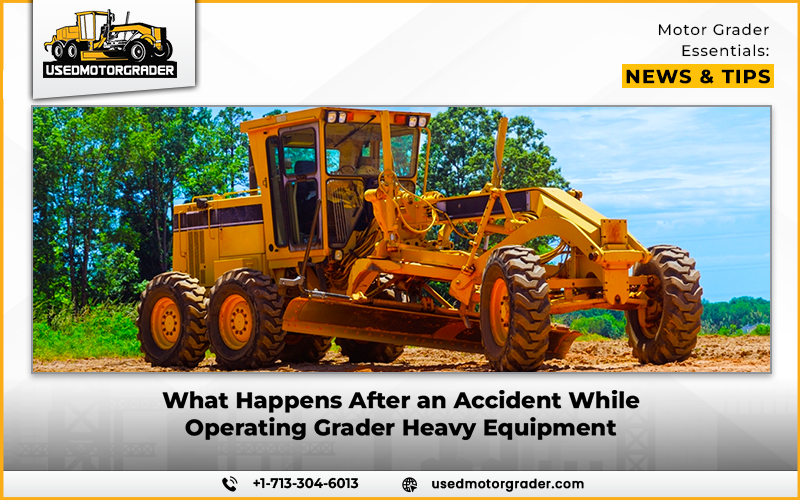No construction crew wants to see an accident on the jobsite. But when it does happen, what comes next matters just as much as what led up to it. Understanding how companies respond to accidents is key to building safer workplaces and smarter teams.
Operating the heavy grader heavy equipment is one of the most difficult jobs. The responsibility comes with a number of risks. The chances of an accident increase even with a minor mistake with the system.
Therefore, becoming aware of the situation is important for everyone involved in the construction process. The most fundamental thing is to follow the rules and regulations provided by the company and OSHA. It can reduce the number of accidents.
Secondly, after the incident, we must know the scale of it and take prompt action to save the heavy equipment operator and those who are in danger at that time.
After the incident, an investigation of the incident must be conducted to determine the actual cause of the accident. Sometimes the accident occurred due to a malfunction of the machine, and there is no mistake of the worker or reporter.
However, sometimes the negligence of the operator, like not understanding the construction machine’s situation or not following the rules, is becoming the reason.
Thus, it is important to make a thorough investigation of the report to understand it and make sure that it never happens in the future.
Immediate Response and First Aid
The most important concern is always the injured worker. If a major injury happens, the site supervisor or safety officer calls 911 immediately. The first response given is basic first aid until professional care arrives.
Now, the job site is made secure. If equipment, scaffolding, or trenches are being used, work is stopped to prevent others from getting hurt.
It is also an important responsibility of the company to keep the first aid boxes and medical equipment at the site. If anything happens at the site, they should treat it on an immediate basis.
The life of any operator and construction worker is important; we must realize the things and make sure everything is functioning on the site before beginning the work.
Incident Reporting
After the problem is brought under control, the company initiates its internal reporting process. According to OSHA, deaths need to be reported within 8 hours and hospitalizations within 24 hours. In most environments, supervisors or foremen are required to complete company internal safety reports.
This step may appear like paperwork, but it is crucial to determine the cause of the accident and correct it. This should be done immediately with every minor detail of the site and the grader heavy equipment.
Although this seems unnecessary, it’s not. The correct and accurate piece of information will help in future cases to understand the root cause of the accident. Subsequently, helpful to solve the issue.
Root Cause Investigation
After an accident, the company launches an investigation to understand why it happened. This isn’t about blaming anyone; it’s about identifying the root cause.
The safety manager or an external consultant may interview the witness or worker who was present at the time of the incident. Review the surveillance report through video and other provided sources.
Communication and Transparency
A reputable company does not stay silent regarding safety issues. Once an incident occurs, the results need to be communicated to employees through toolbox talks or safety meetings. Being open helps build trust and teaches everyone a lesson.
Others take it a step higher by developing monthly safety bulletins that identify near misses, lessons learned, and equipment updates.
Supporting the Injured Worker
Looking after risks is important, but we also need to care about employees. It is important to help the injured worker in both physical and mental ways. This includes:
- Workers’ compensation processing
- Try to reduce the employee’s workload as long as possible
- Talk freely with the worker and their family
When the worker knows they can easily talk with management, it helps them feel important and cared for during recovery.
Technology’s Role in Modern Risk Management
Increasingly, companies are making use of smart technology to enhance both their post-incident reviews and their prevention efforts. A number of tools are having a big impact right now:
- Using a 360° camera to examine your recording
- Wearable devices that detect when a person falls or becomes tired
- Information from machines to discover sudden changes in their behavior
- Using digital logs helps collect data and analyze trends much more easily.
Safety Is a Continuous Process
A jobsite accident is never “just one individual’s fault.” It’s a wake-up call for everyone. The highest-performing companies view each incident as a learning opportunity and use it to strengthen and make their company safer.
Through acting quickly, researching thoroughly, and using what they’ve learned, contractors not only minimize risk but establish trust with their crews.


